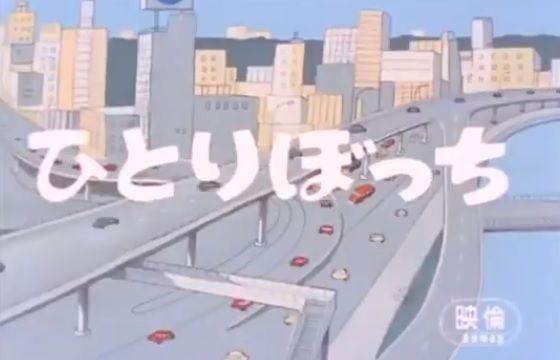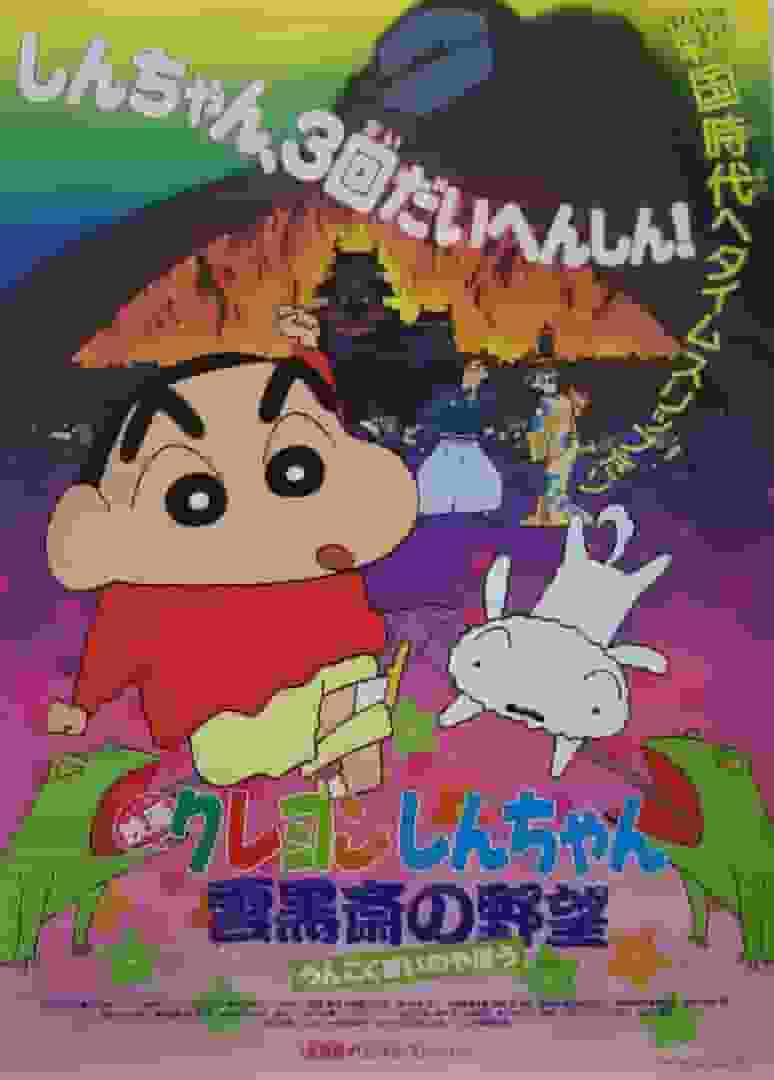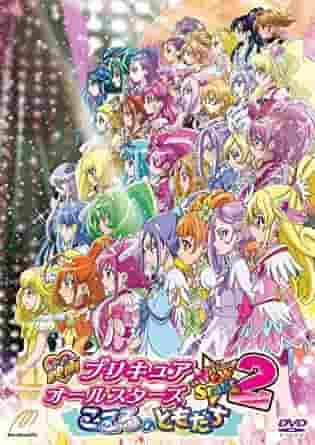The moving and lonely story of "Alone": A deep review and recommended points

Detailed review and recommendation of Hitoribocchi■ Public Mediatheater ■ Original MediaAnime Original ■ Release dateMarch 18, 1969 - January 1, 0000 ■Distribution companyToei ■Frequencies25 min ■ Number of EpisodesEpisode 1 ■ ProductionJapan Industrial Film Center, Toei Animation ■ StoryKen the squirrel is a habitual traffic rule violator who deliberately walks along dangerous roads on his way to and from school, and is isolated at school, unable to make friends. At home, fed up with his parents' excessive love and expectations, Ken spends his days crashing and destroying his racing car alone in his room. In one of his dreams, Ken drives a racing car and meets a young girl named Jun, a squirrel. Just as Jun promised in the dream, Jun comes to visit Ken in real life. Ken is happy to have made a friend for the first time, but no one can see Jun except Ken... ■ExplanationA promotional short film for a traffic safety campaign planned by Toyota Motor Corporation and co-produced by Toei Animation and the Japan Industrial Film Center. The film stresses the importance of following traffic rules, but also depicts the dark side of children's mental health, who feel pressured by excessive parental expectations. It was shown as part of the Toei Manga Festival, alongside Puss in Boots, Akko-chan: The Circus Has Come, Kaibutsu-kun: Defeat the Sand Demon, and Chaco and Ken-chan. This film was later re-edited into a 16mm film under the title Lonely Ken. ■Cast・Ken/Mari Shimizu・Jun/Yoko Mizugaki・Dad/Ryo Ishihara・Mother/Eiko Masuyama・Teacher/Ichiro Nagai・Taiyo/Kunihiko Kitagawa ■ Main staff・Producer/Tetsuo Sato・Screenplay/Natsuyo Shibata・Director/Yoshio Takami・Assistant director/Yoichi Kominato・Chief animation director/Sadao Tsukioka・Art direction/Shinji Ito・Cinematography/Masaaki Sugaya・Editing/Masaaki Hanai・Music/Asei Kobayashi・Sound recording/Susumu Konishi・Sound effects/Noriyoshi Ohira・Recording/Hisako Takano・Developing/Toei Chemical Industry Co., Ltd.・Production/Japan Industrial Film Center, Toei Animation ■ Main Characters Ken is a selfish squirrel boy who doesn't follow any traffic rules. He always lives alone, but after meeting a girl named Jun, he gradually starts to follow the traffic rules. ■ Related works・Simultaneous screening of "Puss in Boots" ■Detailed evaluation"Hitoribocchi" is a short animated film released in 1969 by Toei Animation and the Japan Industrial Film Center. While the film deals with the theme of traffic safety, it also deals with deeper themes such as children's loneliness and excessive expectations from parents. Below, we will provide a detailed evaluation of the film from various perspectives, including the story, characters, production background, music, and visual expression. storyThe story of "Hitoribocchi" begins with the lonely life of Ken, a squirrel boy who ignores traffic rules. Ken has no friends at school, and at home he is plagued by his parents' excessive expectations. In this situation, Ken drives a racing car in his dream and meets a girl named Jun, a squirrel. As promised in the dream, Jun appears before Ken in the real world, but no one can see her except Ken. This setting emphasizes Ken's loneliness and evokes deep empathy from the viewer. The story depicts the gradual change that Ken undergoes after meeting Jun. Jun teaches Ken the importance of following traffic rules, and Ken is able to see Jun by following them. This plot not only conveys the importance of road safety, but also serves as a story of friendship and growth. Ken's change gives hope to the viewer and helps them to deeply understand the significance of following traffic rules. characterThe main character, Ken, is a selfish squirrel boy who ignores traffic rules, but his feelings of loneliness and oppression from his parents resonate with viewers. Ken's character provides an opportunity for children to reflect on their own behavior. Jun is a girl squirrel that Ken meets in his dreams, and her presence heals his heart and encourages him to grow. Jun's character symbolizes the value of friendship and the importance of traffic rules. Ken's parents are portrayed as characters who impose excessive love and expectations. Their actions show the impact that overprotection and excessive expectations have on a child's mind. Other characters such as the teacher and Taiyo also play necessary roles in the progression of the story, but the relationship between Ken and Jun is at the heart of the story. BackgroundThis work was produced as part of Toyota Motor Corporation's road safety campaign. This short film, jointly produced by Toei Animation and the Japan Industrial Film Center, aims to teach children the importance of traffic rules. However, it is more than just an educational film; it also succeeds as an entertaining piece with a profound theme. "Alone" was shown as one of the films at the "Toei Manga Festival." This event screened several short animations at the same time, and was popular among children. This film was shown alongside "Puss in Boots," "Himitsu no Akko-chan: The Circus Troupe Has Come," "Kaibutsu-kun: Defeat the Sand Demon, Kaibutsu-kun and the God of Haniwa Monsters," and "Chako and Ken-chan," and was seen by many children. It was later re-edited as a 16mm film and screened under the title "Alone Ken." musicThe music was composed by Asei Kobayashi and plays an important role in enhancing the atmosphere of the story. The music expresses Ken's loneliness and the joy of meeting Jun, bringing out the emotions of the viewer. Asei Kobayashi's music has the power to evoke deep emotions, even though it is a children's animation. Visual RepresentationThe character designs and animation by animation director Sadao Tsukioka reflect the style of the 1960s. Ken and Jun's character designs are rich in emotion while still retaining the distinctive features of squirrels. Art director Shinji Ito's background art is also an important element in enhancing the atmosphere of the story. In particular, the dream scenes feature fantastical backdrops that emphasize Jun's presence. ■Recommendation details"Hitoribocchi" is not only an animated film for children, but also a work that deals with deep themes. Below, I will explain why I recommend this work from various perspectives. Educational valueThis work has educational value in teaching children the importance of traffic rules. The plot, in which Ken meets Jun and becomes able to see her by following the traffic rules, has the effect of making children understand the importance of traffic rules. In addition, the themes of excessive expectations from parents and feelings of loneliness also provide an opportunity for children to understand themselves. Entertainment"Hitoribocchi" is an educational film that is also highly entertaining. The story of Ken and Jun's friendship and growth will touch the audience. The character designs and background art, which reflect the style of the 1960s, are also visually appealing. Kobayashi Asei's music is also an important element in enhancing the atmosphere of the story. Historical valueThis work is a short film by Toei Animation that was released in 1969, and reflects the society and culture of Japan at that time. The fact that it was screened as one of the works at the "Toei Manga Festival" also adds to its historical value. In addition, the fact that it was produced as part of Toyota Motor Corporation's traffic safety campaign is also important information for understanding the social background of the time. Audience"Hitoribocchi" is a recommended animated film for children, but can also be enjoyed by adults. It offers an opportunity to think about the effects of loneliness and excessive expectations on children from a parent's perspective. It is also recommended for those who are interested in 1960s animation. Conclusion"Hitoribocchi" is a short animated film on the theme of road safety, but it also deals with deeper themes such as children's loneliness and excessive expectations from parents. The story of Ken and Jun's friendship and growth is inspiring to the viewer and helps them understand the importance of traffic rules. The character design and background art reflecting the style of the 1960s, as well as Kobayashi Asei's music, also enhance the film's appeal. This film is recommended for a wide range of audiences, from children to adults, as it has educational, entertainment, and historical value. |
<<: Kaibutsu-kun's appeal and reviews: A deep review of the first season and the movie
>>: The appeal and evaluation of "Puss in Boots": A deep insight into the classic anime
Recommend
The sci-fi romance film "Love Me" is expected to be released in North America on January 31
Today (January 2), the official trailer of the sc...
Poster and stills of the romantic action film "The Canyons" starring Anya Taylor-Joy
On October 15, the first poster and stills of App...
Netflix is producing two seasons of 16 episodes of Splinter Cell
Uncle Sam, who is very familiar to old players, h...
Detective Conan: The Scarlet Bullet has been postponed to April 2021
On April 3, 2020, we reported that " Due to ...
Netflix to produce Sanrio pet animation with My Melody and Kurome as the protagonists
Netflix recently announced that it will make an a...
Hideo Kojima: Death Stranding movie is more than just a game adaptation
Earlier, Kojima Studios and film production compa...
Taking advantage of the chaos, many Twitter users directly uploaded and released the entire movie
Since Musk took over Twitter, the entire company ...
Tobey Maguire celebrates his 49th birthday and shows off his two children
Recently, Tobey Maguire, the most classic Spider-...
Martin is also short of money. Leo's "Killers of the Flower Moon" has a 200 million budget that scares Paramount
According to foreign media reports, the budget of...
A thorough analysis of the charm and depth of "Miss Bernard Says"! A review packed with recommended points
"Miss Bernard Says": The appeal of a sh...
It's no surprise that it's him! Conan voice actor birthday celebration on May 5th planning role selection
May 5th is the birthday of Conan voice actor Mina...
"Slam Dunk" has been released for half a year and has exceeded 10 million viewers. The box office has exceeded "Weathering with You"
According to the latest statistics as of last wee...
Netflix DC Comics Adaptation Series "Sandman" Chinese Trailer to be aired on August 5
The Sandman, a TV series based on Neil Gaiman'...
Funny and bizarre! Marvel officially releases a gift box of prehistoric figures that attracts attention
Marvel officially released a prehistoric "Av...
Hollywood to remake US version of South Korean space sci-fi film "Victory"
South Korean media reported that a US film produc...









